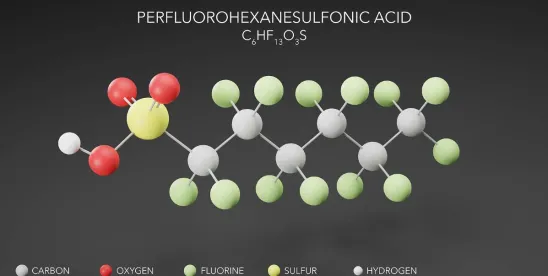Last week, a California court ruled court ruled in the Bounthon et al. v. The Procter & Gamble Co. matter (case number 3:23-cv-00765, in the U.S. District Court for the Northern District of California) that a PFAS detection test called a “total organic fluorine” (TOF) test was unreliable for legal purposes and therefore plaintiffs’ case had to be dismissed. Several articles were published indicating that a “gold standard” PFAS test had been thrown out by a court, with many of the news articles having a slant that the result was surprising. I disagree. But beyond the merits of whether or not the court ruling was a surprise, I also encourage companies undertaking their own due diligence efforts with respect to PFAS to consider the court’s ruling with respect to TOF, as the legal findings provide helpful points to consider for any company contemplating PFAS detection test options.
Bounthon v. P&G Lawsuit
The Bounthon case presents as a very similar to numerous PFAS consumer fraud lawsuits that have been filed across the nation in the past several years. The plaintiffs allege that the defendant manufactured a tampons and marketed them as “100% organic” and made of “pure cotton”, which plaintiffs allege would lead an ordinary consumer to believe that the products are free from PFAS. Yet, when tested using the TOF method, fluorine was detected, which is an indicator of possible PFAS. The presence of PFAS, plaintiffs argued, is the antithesis of an “organic” or “pure cotton” product, and they therefore filed a lawsuit for a class action seeking consumer fraud damages. The defendant moved to dismiss the case, arguing that the reliability of the TOF test was far too tenuous for the case to proceed. The court agreed.
The court held that while plaintiffs touted the TOF test as the “gold standard” test for PFAS, documents showed that was far from true. The court in effect found what the scientific community has known for quite some time – namely, that the TOF test can be used to detect precisely what it indicates – fluorine. This is an indicator of PFAS because PFAS contain at least fluorine atom. However, so do numerous other chemicals – hydrofluoric acid, fluoride compounds, sodium fluoride, calcium fluoride, etc. So, what the TOF test can show is that the substance tested contains fluorine, but it cannot detect whether the fluorine substance is associated with a PFAS or some other chemical compound. This result is far too speculative for a consumer fraud action to proceed, the court ruled.
It should be noted that the case was dismissed without prejudice, meaning that the plaintiffs can attempt to cure the defects in the initial case filed and then re-file the lawsuit. The court gave plaintiffs three weeks in which to try to cure the issues.
Lessons For Corporate Compliance Efforts
Many companies currently undertaking due diligence programs with respect to PFAS to try to determine whether their products or mixtures contain PFAS will first turn to their supply chain. While certain information can be obtained from supply chain, due largely to the sensitivity of the subject of PFAS, many companies find their efforts frustrated by lack of disclosure by their supply chain. Responses received might be worded vaguely, without directly responding to the inquiries, or may redact certain information as trade secrets. Other times, responses are not received at all.
Faced with this scenario, companies naturally begin exploring testing options. TOF is frequently the subject of these discussions, since TOF is a reliable testing method for detection of fluorine atoms. However, I caution companies from proceeding down the TOF path without first understanding precisely what the Bounthon court held last week – that is, that while the TOF results will show you which components, products or mixtures contain fluorine…then what? Those results do not translate necessarily to PFAS presence. This leaves companies with expensive test results that may mean little without a supplemental testing program. As such, it is critically important when undertaking a PFAS detection test discussion as part of due diligence to speak with appropriate vendors regarding testing options, while also understanding precisely what it is the company wishes to achieve through testing. Perhaps TOF is a starting point. Perhaps it is not needed at all. Perhaps other testing options exist to best suit the needs for achieving the company’s goals. The best advice is often the simplest and in the case of PFAS detection tests, the best advice is to fully understand all options and match them to your corporate goals before proceeding.




 />i
/>i
